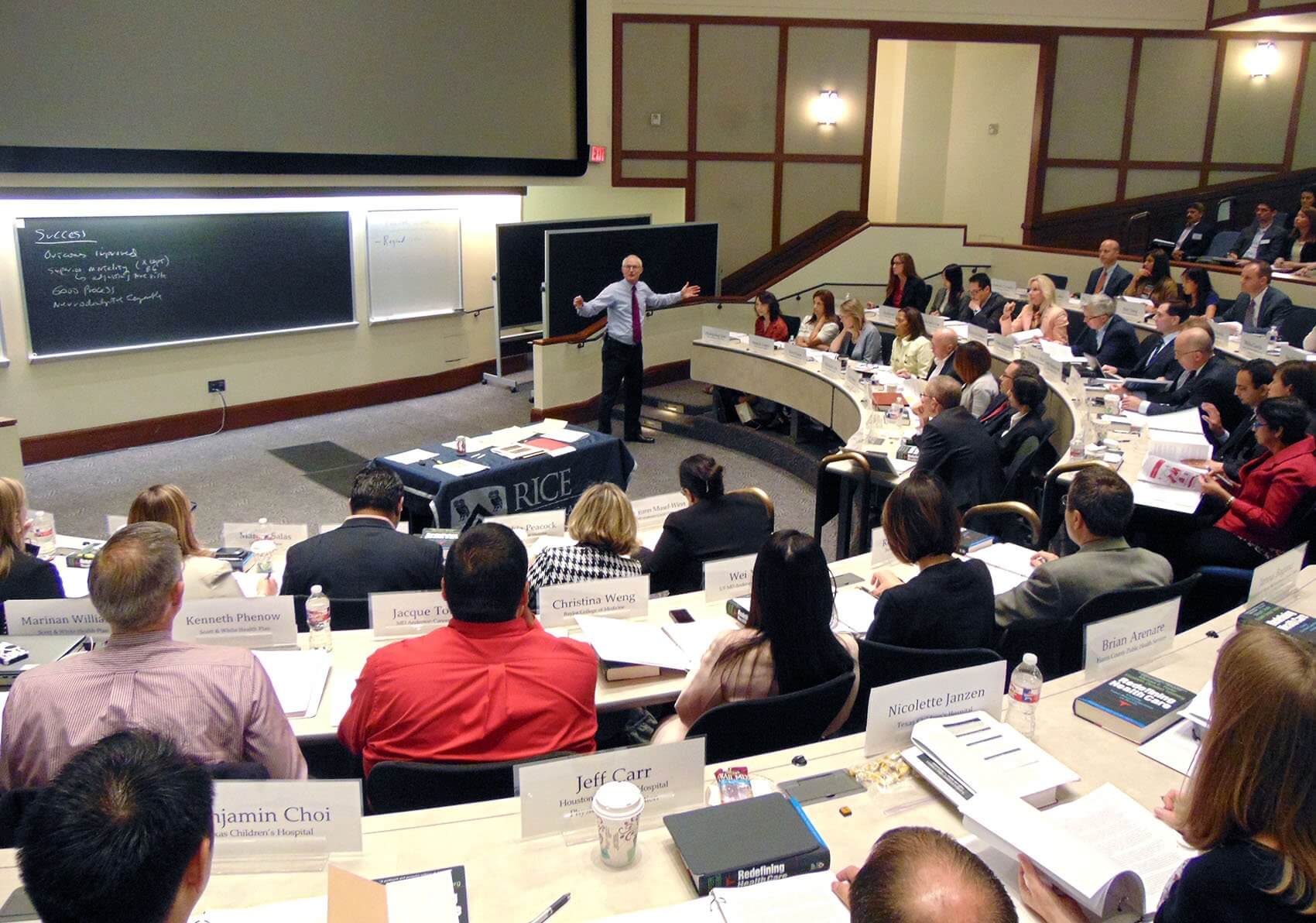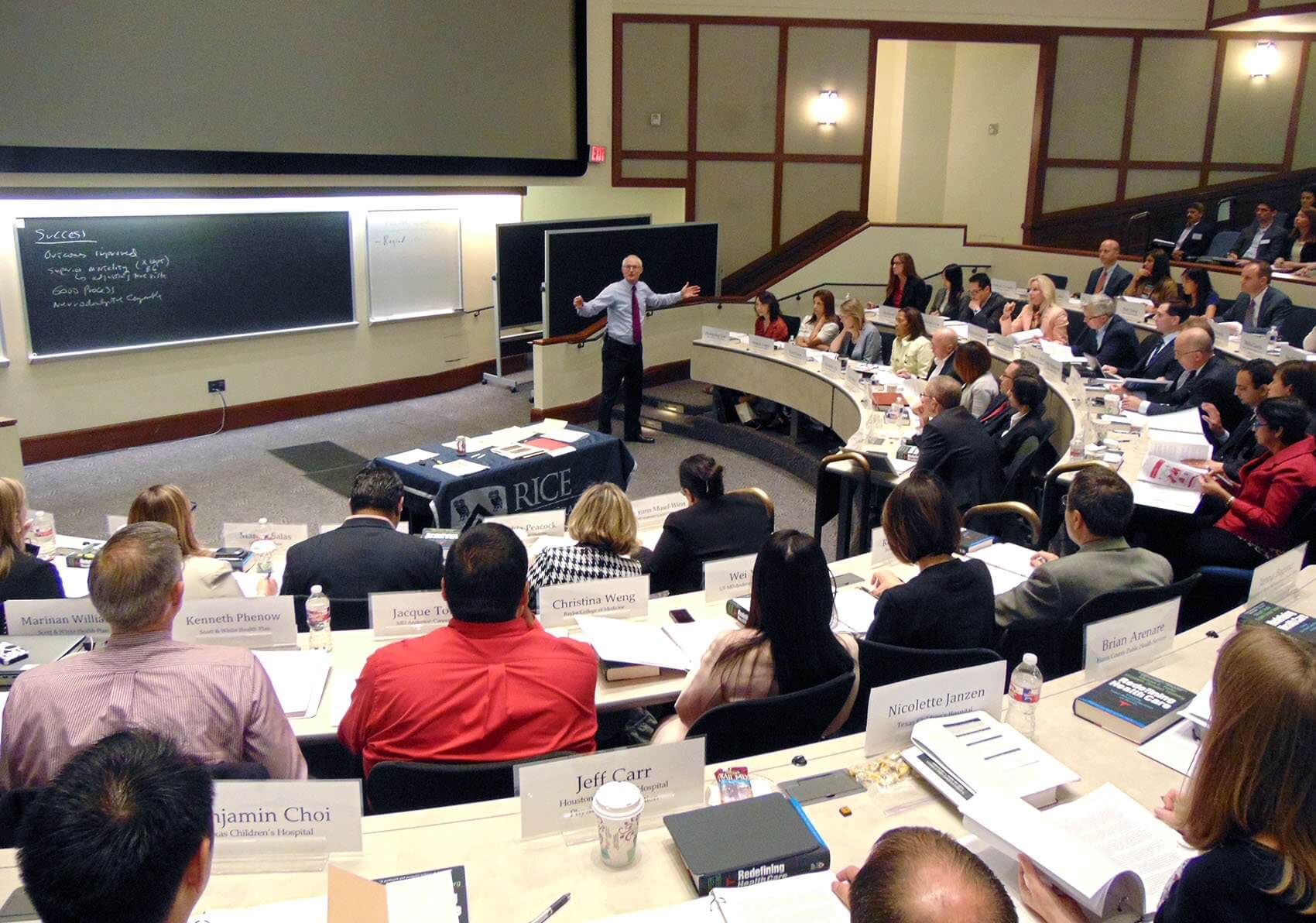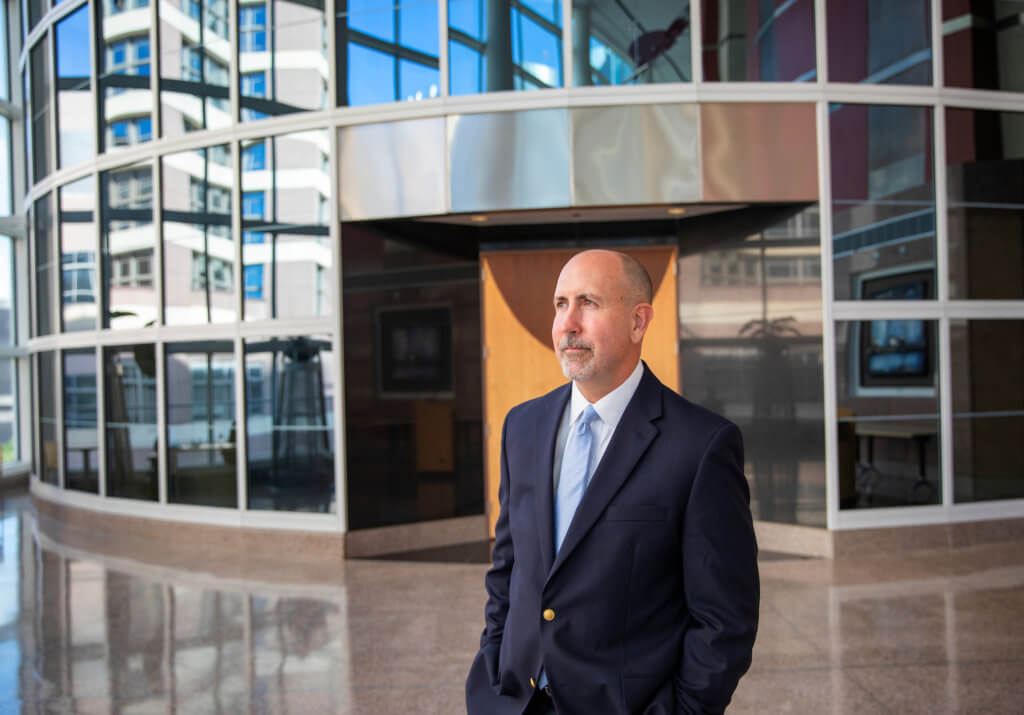Strategy for Value-Based Health Care Delivery course comes to the Texas Medical Center

Bouncing around the chalkboard with the eager curiosity and kinetic energy of a natural-born educator, Harvard Business School (HBS) professor Michael E. Porter, Ph.D., implores his audience to consider a seemingly daunting question: how do we solve the crisis of cost in health care?
“This is not an academic program,” he reminded an assemblage of executives, physician leaders, practicing physicians and senior administrators responsible for health care delivery throughout the Texas Medical Center. “This is based on what happens in the real world, at real institutions, and what we all have to do to move ahead in health care. There’s no other way to improve the health care system except to dramatically improve the value of care delivered for each dollar spent.”
On Wednesday, May 6, and Thursday, May 7, the Texas Medical Center hosted a two-day course on Strategy for Value-Based Health Care Delivery, taught by Porter and fellow HBS professor Robert S. Kaplan, Ph.D. Anchored in actual in-depth case studies—including a comprehensive look at the success of Texas Children’s Hospital—the program sought to enable health care organizations with strategies for improving value for patients, defined by Porter and Kaplan as the health outcomes achieved per dollar spent.
“I’ve always thought that the activity-based costing method would work well in health care, but wasn’t able to apply it until Mike [Porter] reached out to me about five years ago,” recalled Kaplan, who pioneered a method to calculate costs known as time-driven activity-based costing. “That was the start of this journey, and one of the first organizations that we worked with was MD Anderson.”
The University of Texas MD Anderson Cancer Center’s Institute for Cancer Care Innovation (ICCI) has used Porter’s model of value creation since its inception, and most of ICCI’s programs center around outcome and cost measurement.
This year, several TMCx companies audited the class to incorporate the lessons learned into their burgeoning businesses.
“We’re interested in value-based care and we’re still learning about time-driven activity-based costing,” said Jon Gips, chief executive officer of Sage Health, a company extending the capabilities of modern electronic health record systems with human-centric sensors and analytics. “We see the opportunity to use sensors to help collect some of the data they need for that activity.”
“Prof. Kaplan was talking about different ways to collect data, such as shadowing and interviewing, but he also alluded to the emergence and rise of electronic monitoring,” he added. “That was great to hear and exciting for the prospects of our approach.”
An atmosphere of optimism and determination—even in the face of serious challenges—was palpable throughout the course.
“The big picture here is that delivering value for the patient is the core purpose of health care,” affirmed Porter. “If you can deliver better outcomes, and you can do it more efficiently, you will win. All over the world, the organizations that can demonstrate that will be successful—just like Texas Children’s Heart Center. Don’t make the mistake of thinking that you won’t be rewarded for this. Even though it looks uncertain now, the people who can deliver excellent value will win every time.”




